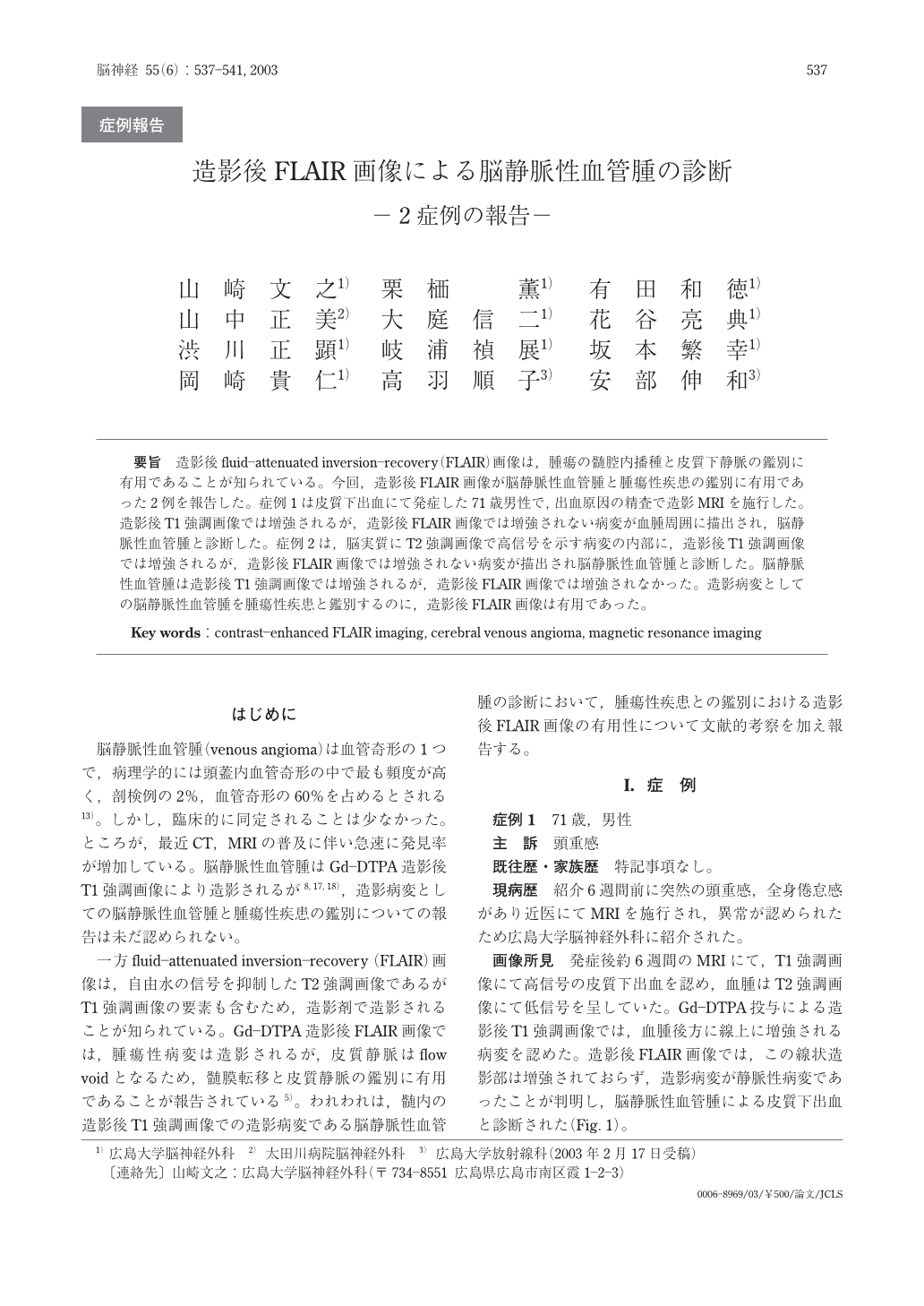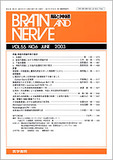Japanese
English
- 有料閲覧
- Abstract 文献概要
- 1ページ目 Look Inside
要旨 造影後fluid-attenuated inversion-recovery(FLAIR)画像は,腫瘍の髄腔内播種と皮質下静脈の鑑別に有用であることが知られている。今回,造影後FLAIR画像が脳静脈性血管腫と腫瘍性疾患の鑑別に有用であった2例を報告した。症例1は皮質下出血にて発症した71歳男性で,出血原因の精査で造影MRIを施行した。造影後T1強調画像では増強されるが,造影後FLAIR画像では増強されない病変が血腫周囲に描出され,脳静脈性血管腫と診断した。症例2は,脳実質にT2強調画像で高信号を示す病変の内部に,造影後T1強調画像では増強されるが,造影後FLAIR画像では増強されない病変が描出され脳静脈性血管腫と診断した。脳静脈性血管腫は造影後T1強調画像では増強されるが,造影後FLAIR画像では増強されなかった。造影病変としての脳静脈性血管腫を腫瘍性疾患と鑑別するのに,造影後FLAIR画像は有用であった。
It has been reported that contrast-enhanced fluid-attenuated inversion-recovery (FLAIR) sequences were useful for detecting superficial abnormalities, such as meningeal disease, because they do not demonstrate contrast enhancement of cortical vessels with slow flow as do T1-weightedimages. We reported the usefulness of contrast-enhanced FLAIR images to differentiate cerebral venous angioma from tumor in two patients.
Case 1 was a 71-year-old man developed cortical hemorrhage. Post contrast-enhanced T1-weighted images showed an enhanced lesion around the hematoma, whereas contrast-enhanced FLAIR images showed no enhancement of the lesion, thus he was diagnosed as cortical hemorrhage from cerebral venous angioma.
Case 2 was a 72-year-old woman, who was examined MR images because of the jugular foramen neurinoma. There was a T2-high-intensity lesion in the right frontal lobe, and post contrast-enhanced T1-weighted images showed an enhanced lesion in and around the T2-high-intensity lesion. Post-contrast FLAIR images showed no enhancement, and she was diagnosed as cerebral venous angioma.
Contrast-enhanced fast FLAIR sequences was useful in differentiation between venous angiomas and tumors. Identification of these lesions was due to the flow-void phenomenon in vessels with slow-flowing blood such as venous angioma, which could not be differentiated from tumors on T1-weighted images.

Copyright © 2003, Igaku-Shoin Ltd. All rights reserved.


